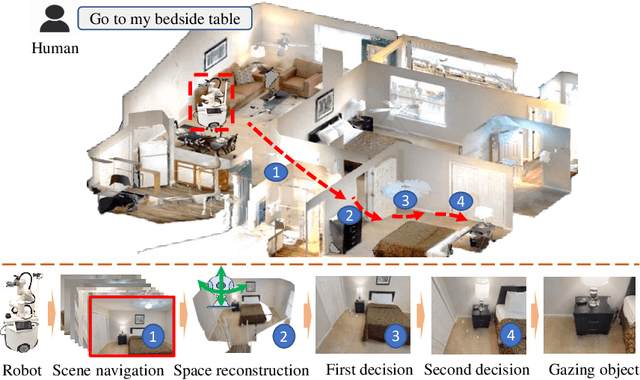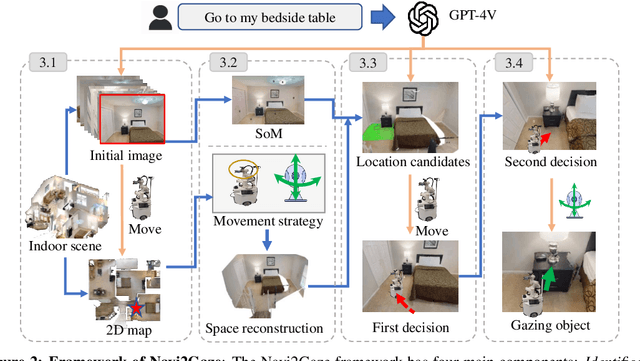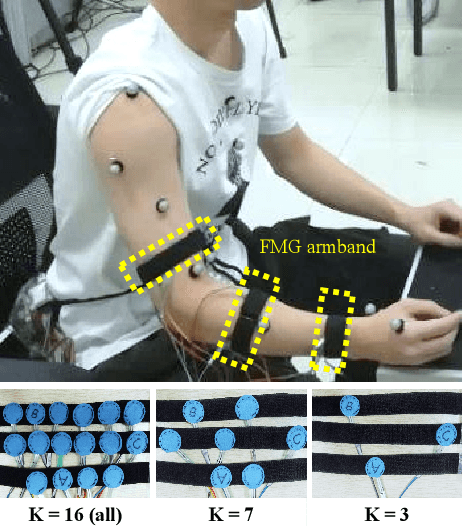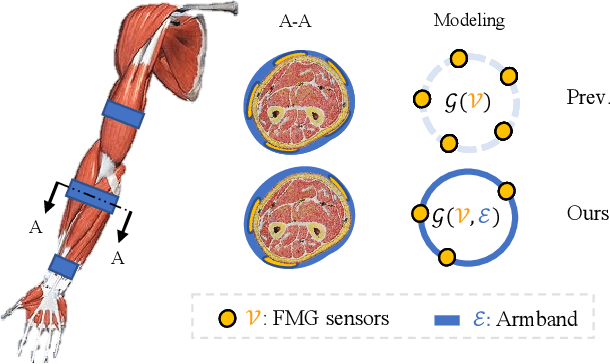Zihao Du
Navi2Gaze: Leveraging Foundation Models for Navigation and Target Gazing
Jul 12, 2024



Abstract:Task-aware navigation continues to be a challenging area of research, especially in scenarios involving open vocabulary. Previous studies primarily focus on finding suitable locations for task completion, often overlooking the importance of the robot's pose. However, the robot's orientation is crucial for successfully completing tasks because of how objects are arranged (e.g., to open a refrigerator door). Humans intuitively navigate to objects with the right orientation using semantics and common sense. For instance, when opening a refrigerator, we naturally stand in front of it rather than to the side. Recent advances suggest that Vision-Language Models (VLMs) can provide robots with similar common sense. Therefore, we develop a VLM-driven method called Navigation-to-Gaze (Navi2Gaze) for efficient navigation and object gazing based on task descriptions. This method uses the VLM to score and select the best pose from numerous candidates automatically. In evaluations on multiple photorealistic simulation benchmarks, Navi2Gaze significantly outperforms existing approaches and precisely determines the optimal orientation relative to target objects.
Optimization of Forcemyography Sensor Placement for Arm Movement Recognition
Jul 22, 2022



Abstract:How to design an optimal wearable device for human movement recognition is vital to reliable and accurate human-machine collaboration. Previous works mainly fabricate wearable devices heuristically. Instead, this paper raises an academic question: can we design an optimization algorithm to optimize the fabrication of wearable devices such as figuring out the best sensor arrangement automatically? Specifically, this work focuses on optimizing the placement of Forcemyography (FMG) sensors for FMG armbands in the application of arm movement recognition. Firstly, based on graph theory, the armband is modeled considering sensors' signals and connectivity. Then, a Graph-based Armband Modeling Network (GAM-Net) is introduced for arm movement recognition. Afterward, the sensor placement optimization for FMG armbands is formulated and an optimization algorithm with greedy local search is proposed. To study the effectiveness of our optimization algorithm, a dataset for mechanical maintenance tasks using FMG armbands with 16 sensors is collected. Our experiments show that using only 4 sensors optimized with our algorithm can help maintain a comparable recognition accuracy to using all sensors. Finally, the optimized sensor placement result is verified from a physiological view. This work would like to shed light on the automatic fabrication of wearable devices considering downstream tasks, such as human biological signal collection and movement recognition. Our code and dataset are available at https://github.com/JerryX1110/IROS22-FMG-Sensor-Optimization
 Add to Chrome
Add to Chrome Add to Firefox
Add to Firefox Add to Edge
Add to Edge